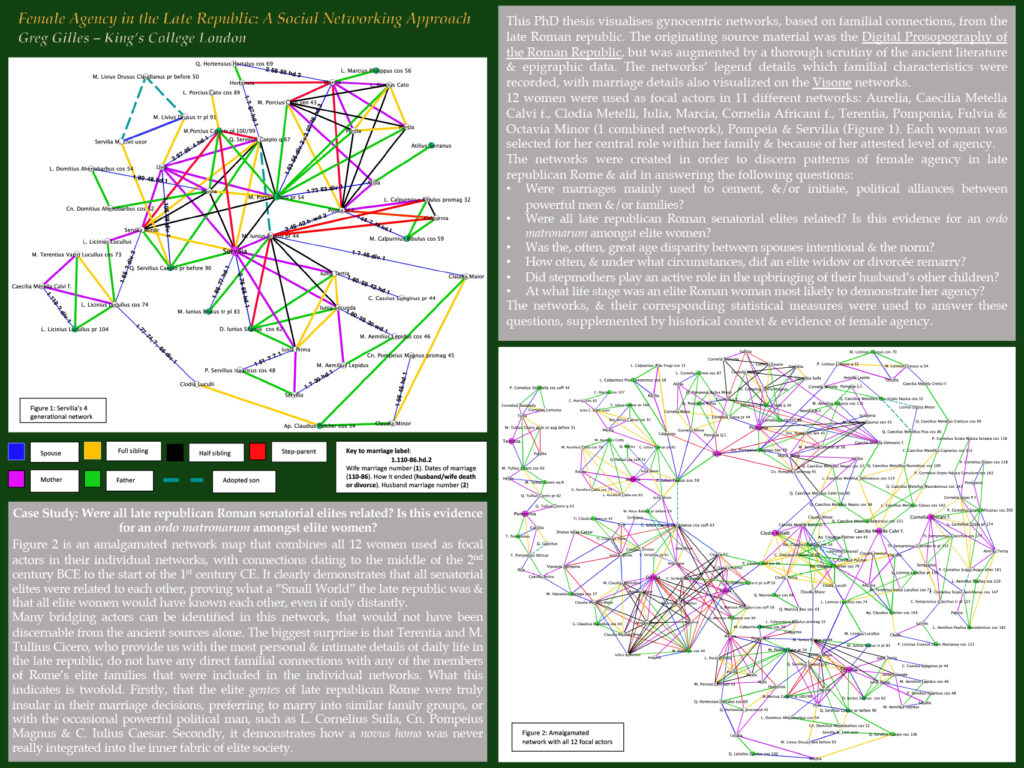Greg Gilles
Time and Place: Thursday, 01.07., 16:00–17:00, Room 3
Session: Poster Session – Institutions and Institutionalisation
Keywords: Female networks; Social Network Analysis; Late Roman Republic
This poster presents current findings from my PhD research on female agency in the late Roman republican. My PhD uses female centred networks to connect women, and men, during this period as visualisation enables an easier identification of different patterns of connectedness, whether they be social, familial and/or political. My research primarily uses the newly conceptualised Digital Prosopography of the Roman Republic from King’s College London, as well as various ancient sources, to create familial data sets so as to identify connections within four generations (one above and two below) of the various central female nodes. Through trial and error, focussing on four generations not only enables the identification of possible repeated familial connections, but also pinpoints new connections forged with powerful new men or families in subsequent generations.
The numerous female centred networks created, ranging from c.250 BC to c.10 BC and of elite and equestrian women, are used to answer the four main questions that form the driving force of my PhD:
- Were marriages mainly used to cement, or initiate, political alliances between powerful men and/or families?
- Was the, often, great age disparity between spouses intentional and the norm, or was it simply due to the military and/or political careers that Roman men had to undertake before they could marry?
- Was a rich widow or divorcée an attraction for politically aspiring
- new man/impoverished noblemen?
- Did stepmothers play an active role in the upbringing of their husband’s other children?
This poster, therefore, showcases the networks that I have been created from the analysis of literary materials and demonstrates how social networks can be used to answer these, or similar, historical questions. The issues with the data, and their impact on the creation of these networks, as well as their analyses, will also be discussed.
